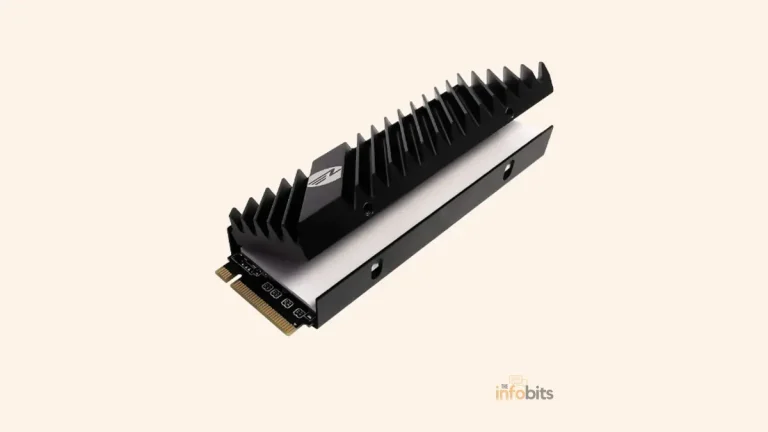MBR or GPT for SSD, Which Is Better and How to Choose?
When configuring a solid-state drive (SSD) for your computer, one critical option is the partitioning strategy to use. Master Boot Record (MBR) and Globally Unique Identifier Partition Table (GPT) are the two most commonly utilized techniques.
But MBR or GPT for SSD, Which Is Better?
Understanding the differences between MBR and GPT is critical for ensuring your SSD’s best speed, compatibility, and usage.
This article will go into detail about MBR and GPT, explaining their benefits and drawbacks and offering insights into the elements to consider while deciding between them.
In addition, we will look at how to convert between MBR and GPT partitions and suggest best practices for designing and optimizing your SSD partitioning scheme.
By the conclusion, you will have learned all you need to know to make an informed selection of MBR vs GPT SSD that meets your individual needs and maximizes the potential of your SSD.
1. Understanding MBR and GPT
If you’ve ever installed an SSD or worked with disk partitioning, you’ve probably heard of the terms MBR and GPT.
These acronyms stand for Master Boot Record (MBR) and GUID Partition Table (GPT), two partitioning techniques used on storage devices like SSDs.
Understanding the differences between MBR and GPT is critical when deciding which is best for your SSD.
2. Differences Between MBR and GPT
2.1 Structure and Partitioning
MBR, the oldest of the two, employs a 32-bit partition table that is stored in the disk’s first sector.
It can only handle up to four primary partitions or three primary partitions and one extended partition containing logical disks.
GPT, on the other hand, employs a 64-bit partition table and offers a more versatile partitioning strategy. It supports up to 128 main partitions without the need for an extended partition.
2.2 Size and Capacity Limitations
Another key distinction between MBR and GPT is their capacity and size constraints.
MBR supports a maximum disk capacity of 2 terabytes (TB); hence, bigger SSDs cannot be fully exploited under this system.
GPT, on the other hand, does not have this restriction and can handle disks larger than 2TB in size, making it ideal for newer high-capacity SSDs.
3. Advantages and Disadvantages of MBR
3.1 Advantages of MBR
MBR’s compatibility with older operating systems is one of its benefits.
If you’re running an older version of Windows or a legacy machine, MBR is the better option due to its wider compatibility.
MBR is also easier to set up and handle in general, making it a user-friendly solution for individuals unfamiliar with complex disk management procedures.
3.2 Disadvantages of MBR
As previously stated, MBR has restrictions on the number of partitions it can handle, which can be a considerable disadvantage in advanced storage configurations.
Furthermore, the MBR size constraint limits the full usage of big SSDs.
Finally, because MBR lacks built-in redundancy and validation procedures, it provides less security against data manipulation or corruption.
4. Advantages and Disadvantages of GPT
4.1 Advantages of GPT
GPT’s main benefit is its ability to accommodate higher disk capacities, which makes it appropriate for newer high-capacity SSDs.
GPT further improves data redundancy and integrity by storing a backup partition table at the disk’s end, lowering the possibility of data loss.
GPT also allows multiple partitions, allowing for more complicated storage configurations like multi-boot systems.
4.2 Disadvantages of GPT
One of GPT’s biggest drawbacks is its incompatibility with older operating systems.
Compatibility difficulties may arise if you are using an old version of Windows or other legacy systems.
Furthermore, compared to MBR, setting up GPT partitions takes more technical knowledge and tools, which might be scary for inexperienced users.
5. Factors to Consider When Choosing Between MBR and GPT for SSDs
There are a few aspects to consider while deciding between MBR (Master Boot Record) and GPT (GUID Partition Table) for your SSD.
Let’s look at three important factors:
5.1 Compatibility with Operating Systems
The interoperability of MBR and GPT with various operating systems is a key consideration.
MBR is compatible with all versions of Windows, as well as the majority of older macOS and Linux systems.
GPT, on the other hand, works with recent versions of Windows, macOS, and Linux.
If you want to use an older operating system, MBR may be the safer option. However, if your system is recent, GPT provides greater flexibility.
5.2 Disk Size and Future Expansion
The size of your SSD, as well as any prospective future expansion plans, should be considered. MBR allows storage capacities of up to 2 terabytes, which is more than enough for most users.
GPT is the best option if you have a bigger SSD or intend on adding additional storage in the future.
GPT can support disks with capacities of up to 9.4 zettabytes, ensuring that you are prepared for any storage requirements that may occur.
5.3 Security and Data Recovery
Many users place a high value on security and data recovery.
MBR is based on a single backup copy of the partition table, which makes data recovery more difficult in the event of corruption or failure.
GPT, on the other hand, employs a backup of the partition table at the start and end of the disk, which makes it more resistant to data loss. GPT is the way to go if data security and recovery are high priorities for you.
6. How to Convert MBR to GPT (and vice versa) for SSDs
There are a few ways available for converting between MBR and GPT for your SSD. Here’s a basic rundown:
6.1 Backup and Data Safety Precautions
Before converting, make a backup of all your data and follow all required safety procedures.
Because converting partition styles might result in data loss or corruption, it’s best to be cautious rather than sorry.
6.2 Using Disk Management Tools
Windows has built-in tools such as Disk Management that can assist you in converting partition styles.
You can use MBR or GPT to format a new disk or convert an existing disk to the appropriate format.
Keep in mind, however, that this procedure may only be employed if your drive has no partitions or data.
6.3 Third-party Conversion Tools
Third-party conversion programs are available if you have data on your disk or desire a more easy conversion process.
These programs frequently have user-friendly interfaces and can convert between MBR and GPT without losing data. Just be sure to select a trustworthy and recognized tool.
Related: Convert SSD to GPT: A Step-by-Step Guide for Efficient Disk Management
7. Best Practices for Choosing and Configuring MBR or GPT for SSDs
Here are a few important practices to remember while selecting and setting the MBR or GPT for your SSD:
7.1 Assessing Your Specific Requirements
Consider your requirements, such as operating system compatibility, disk capacity, and future expansion plans.
You may make an informed selection that meets your demands if you understand what you are looking for.
7.2 Preparing the SSD for Partitioning
Make sure your SSD is properly ready before partitioning it.
This involves backing up your data, formatting the disk if needed, and inspecting the drive for problems or damaged sectors. Taking these steps will aid in the partitioning process.
7.3 Selecting the Appropriate Partitioning Scheme
Choose between the MBR and GPT partitioning schemes according to your needs.
Think about things like compatibility, disk space, security, and data recovery.
Choosing the proper scheme will aid in optimizing your SSD’s performance and capabilities.
8. Conclusion: Making an Informed Decision for Your MBR vs GPT SSD
The choice between MBR and GPT for your SSD is a crucial one that should be based on your unique needs.
Think about things like operating system compatibility, disk capacity, and data security. If you need to convert from MBR to GPT, make a backup of your data and select an appropriate approach.
You can guarantee that your SSD functions properly and satisfies your requirements by following best practices and making an informed selection.
Finally, the decision between MBR and GPT for your SSD is ultimately determined by your individual needs and the operating system you are running.
MBR provides compatibility with previous systems as well as simplicity, but GPT supports higher capacity, improved security, and flexibility.
With the information supplied, you may confidently set and optimize the partitioning scheme of your SSD, guaranteeing the best performance and usage.
When migrating from MBR to GPT, remember to back up your data and use best practices.
You may optimize the capabilities of your SSD and enjoy a flawless computing experience by making an informed selection.
Frequently Asked Questions
1. Can I convert an MBR disk to GPT without losing data?
Converting an MBR disk to GPT usually entails reformatting the entire disk, which might result in data loss. Before beginning the conversion procedure, make a backup of your data. However, there are several third-party applications available that promise to accomplish the conversion without data loss, but use caution and keep a backup nonetheless.
2. Are MBR and GPT limited to specific operating systems?
Most operating systems, including earlier versions of Windows, Linux, and macOS, support MBR. GPT, on the other hand, works with newer operating systems like Windows 10, macOS (10.6.5 and later), and the majority of Linux variants. To avoid compatibility difficulties, make sure your operating system supports the partitioning strategy you choose.
3. Can I mix MBR and GPT on the same SSD?
No, MBR and GPT cannot coexist on the same SSD. The partitioning technique affects the entire disk rather than individual partitions. As a result, you must select either MBR or GPT for the whole SSD.
4. Is it possible to convert a GPT disk to MBR?
While it is technically feasible to convert a GPT disk to an MBR disk, the procedure requires removing all existing partitions, which results in data loss. As a result, before attempting to convert a GPT disk to MBR, make a backup of your data. Furthermore, certain restrictions, such as the 2TB partition size limit, will apply after the conversion.
Please share this article with your friends and relatives if you find it useful.
We also ask that you bookmark this page for future reference, as we are constantly updating our articles with new information.
Sign up for our free newsletter as well to receive fresh information immediately in your inbox and keep technically up to date.







